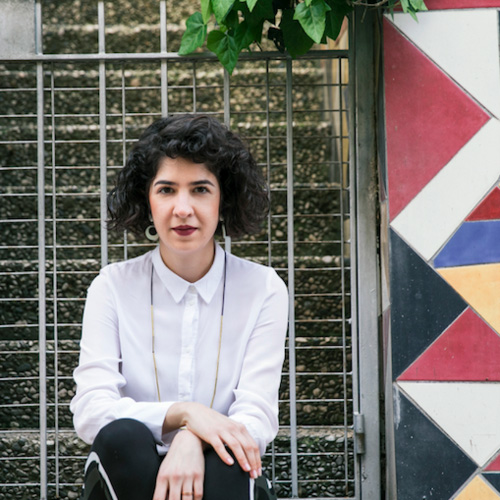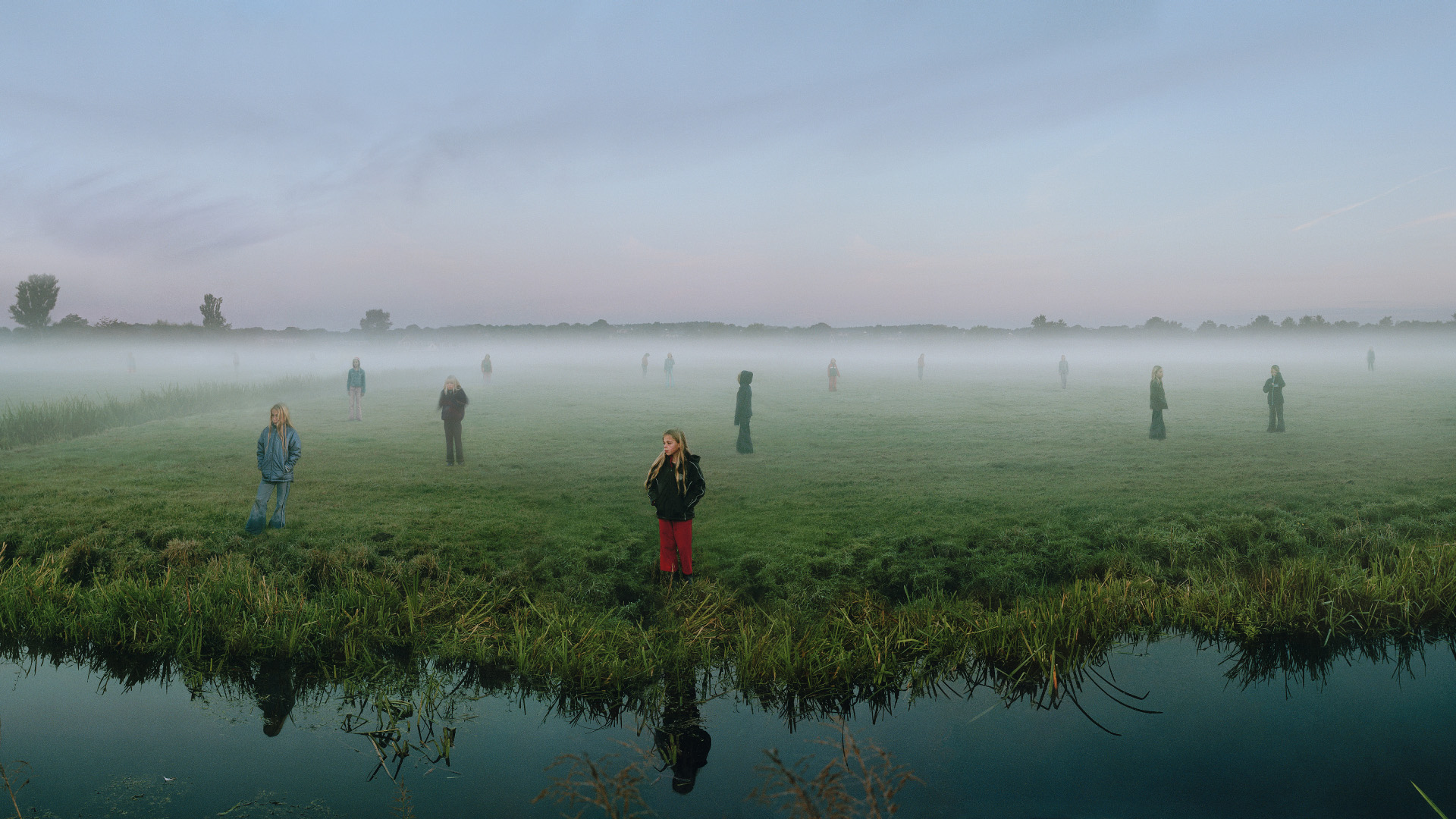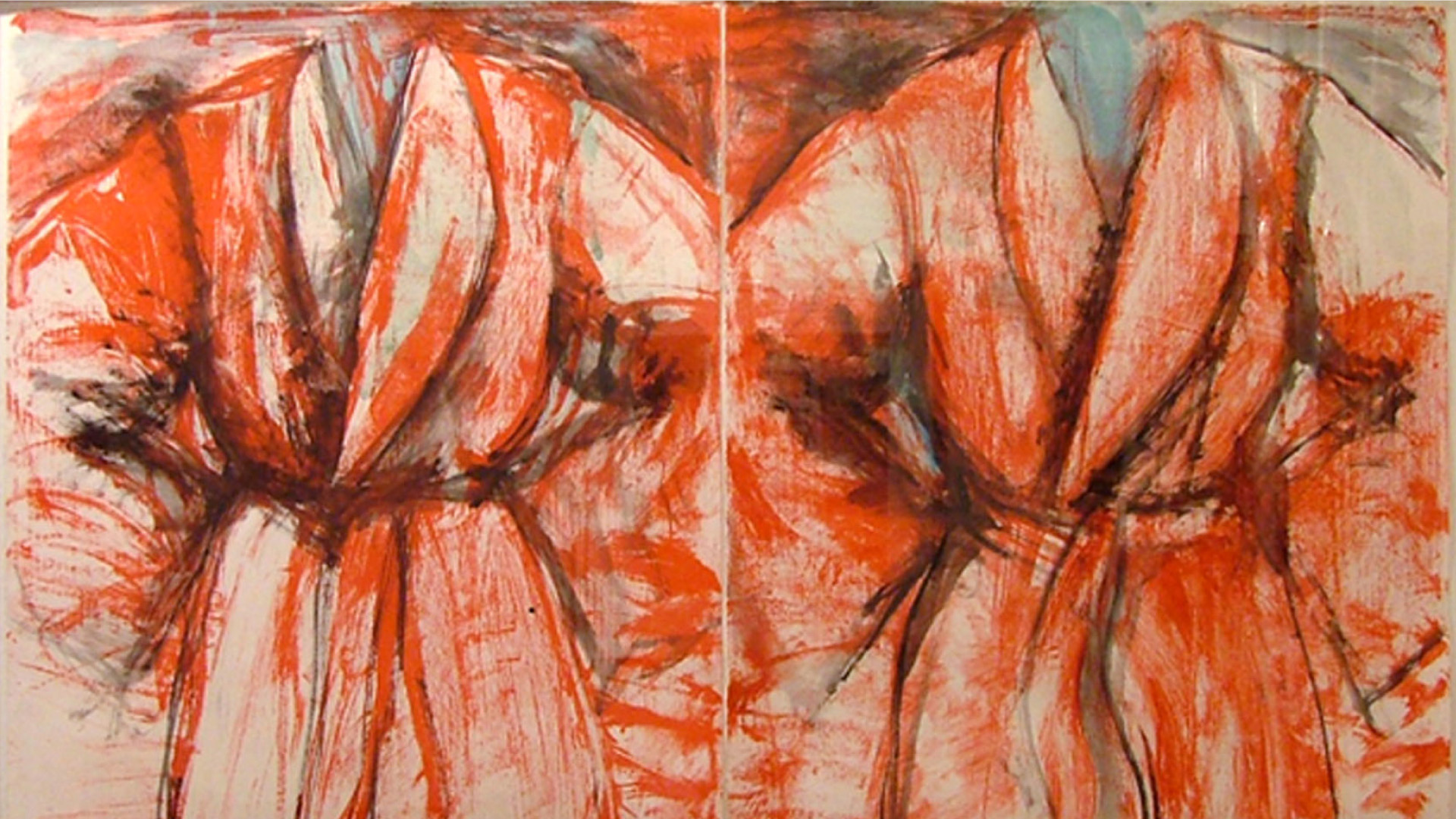Blog
An Interview with Boomoon
on his Bosphorus Project
30 June 2020 Tue

NAZ CUGUOĞLU
nazcuguoglu@gmail.com
Naz Cuguoğlu: In your practice, you tend to focus on the landscape, leaving the human figure out of the frame. This image is very relevant for today, thinking about the pandemic, and all those streets around the world that are empty or canals occupied with dolphins. When did you first become interested in this landscape that is free of humans? And how did it evolve throughout the years in your practice?
Boomoon: When I was young, I had a vocation to document my time and considered natural landscape as cliché. But I started having doubts about the use of photographs for self-serving statements or social participation. After military service, where I experienced an extreme form of collectivism, my doubt grew stronger, and I turned my eyes towards nature without human presence. I am not a naturalist or environmentalist. If I took a position in favor of nature, it was because I wanted to take a distance with ready-made meanings and pursue the power of the image itself. My Series “On the Clouds” from the 1990s was the result of the conscious elimination of any possible meaning. This was a turning point in my work and a life-changer. I decided to cut myself from the social life I had had until then, and I moved to the mountains on the East coast of the Korean peninsula. Finally, I could face nature in exchange for my solitude.
NC: Similarly, your project Bosporus, commissioned by the Borusan Contemporary Art Collection, focused mostly on the Bosphorus itself. Could you talk about this commissioning process and your conversation with Borusan Contemporary—how did the work develop in response to this conversation? How long did you stay in Istanbul? How was your experience in the city?
B: I think that the commission came from an understanding and interest in my work on water. Apart from the theme and time frame, I was given total freedom. When I visited Istanbul for the first time in April 2017, I had a meeting at Borusan Contemporary in an office with a view on the Bosphorus. The only thing I could say was, “I will receive well the images that will come as I wait for them.” Elisabeth Dewberry, a writer who attended the meeting, supported me by saying that “talented” is another word for “gifted.” Images come to me suddenly, and I should be ready to receive them. To deserve the gift of images, I must cherish my dream and wait.
Istanbul appeared to me as a place of nostalgia. The feeling coming from the sedimentation of time and of lives, the strong presence of water and the boat trips stirred up my memory. However, as I desired a fresh encounter with the Bosphorus, I tried to avoid any prejudice or prior information about it. I visited Istanbul three times, each in a different season, and I started to work without knowing where I would arrive. Through the repeated boat rides, I became acquainted with physical characteristics of the Bosphorus, such as changing light, rhythm, and energy field according to the location and time of the day. Then I threw myself into the unknown dimension beyond the visible. The camera was a device that enabled an immersive experience. My Bosphorus series revealed to me both the site and myself.
NC: Bosphorus gave only space to the fish and jellyfish, and this makes me think of Haraway’s chthulucene—caring for/making kin with small organisms so that we can imagine a livable world one day. How did you become interested in these figures? What is the role of philosophical and mythological allegories in this interest?
B: Fish is really like an unexpected gift. I became familiar with an old man serving on the boat during my repeated boardings. One day he asked me if my camera could capture the underwater world. As I was absorbed by the reflection on the water and its moving surface, I hadn’t thought of the depth of the Bosphorus. After the old man’s whimsical question, I met shoals of fish like horse mackerels and mullets, and I started to look through the water. But I couldn’t see the man on the boat anymore. It was a mysterious encounter. I expected to meet fish again in the next visit, but the Bosphorus in winter was crowded with jellyfish instead. I find it interesting that jellyfish means “mother of the sea” in Turkish.
The Bosphorus reminded me of the myth of Butes who threw himself into the sea in search of the source of his enchantment. I consider my work as fruits from entering the water. Of course, I looked down at the water from the boat, but I was absorbed in the restlessly moving water. There was something hypnotic. The encounter with fish and jellyfish may have been inevitable as they form the body of the Bosphorus.
NC: Your interest in nature is also very much inspired by the traditional aesthetics of Sansu (Mountain-Water). I had the chance to experience these paintings recently at a show at the Berkeley Art Museum. And since then, I have been thinking about this perception of nature—that is moving rather than still. Your work does something very similar. Could you tell us more about this inspiration?
B: I did not work with the traditional Sansu aesthetics in mind. Working in the mountains from my surroundings, I could recognize my cultural DNA. The camera is a device of visual representation based on a mono focus perspective so that it has limits to represent my landscape experience. I wanted to decide freely the image format, a vertical or a horizontal spread instead of accepting the ready-made format determined by the manufacturer. It also corresponded to my memory of the promenade of the gaze in the scroll painting. “Promenade (in the painted landscape) in a lying position (in front of the painting)” was an appreciated way of contemplation of Sansu painting.
Fish from the Bosphorus may also resonate with the tradition of “Oerakdo,” which means “Fish Play Painting.” It is characterized by the fantastical space created by mixing viewpoints above and underwater. It was interesting to find within me this visual heritage. Still, the most important lesson I received from the literati’s painting was that the artist’s life and their attitude result in their work.

Boomoon, Bosphorus Reflections No. 1, 2018.
240 x 150 cm (each), Laserchrome print.
NC: How do you envision the future of art as we are moving on from where we are now? We are experiencing institutions trying to come up with better technologies to activate virtual spaces. What do you think about this approach? Will we ever experience the art as we used to one day again? Is this even necessary?
B: When a new technology appears, people are embarrassed or fascinated, but they become quickly familiar with it and dominated by it. Older generations usually regret the loss of the familiar and say that the world is getting worse, but younger generations have nothing to regret and find new possibilities in the unknown world. There is no country for an old man!
If we consider the current development of technology and the recent social needs for the contactless, it is obvious that the virtual will be developed in all sectors of daily life. However, the more we use virtual reality, the more valuable and exceptional the perceptual experience in physical space will be. We see it with music. At the beginning of recording technology, the quality of sound could not satisfy the ears of the music lover, but nowadays, a recorded piece can raise a great emotion. Attending a concert is a special ceremony.
Personally, I experienced the transition from analog to digital in my working process around 2004. It changed my work. However, the physical and phenomenological experience as well as the relation between the body and the image is always fundamental in my work. Although I am following the most advanced technology in photography, I remain the same as an artist. I am preoccupied with resolving the practical problems and trying to keep on going further every day. Frankly speaking, the future of art or that of the art system is out of my concerns.
NC: What are you working on these days? What are you reading / writing/ cooking? What are your rituals of self-care and community-care?
B: All my travel plans are postponed, but I do not feel confined thanks to the vivid nature around my house. I do gardening, printing my early work from the 1970s in gelatin silver print and I read Proust again. It is not lost time at all. Whenever I read Proust, his description of the landscape amazes me. He contemplated a landscape on the move, and he could see its hidden dimension with the power of imagination and memory. This suggests for me the way for landscape photography.
I need to take a distance to live and see, but it is often misunderstood as an anti-social attitude. How curious to see that taking a distance is today recommended for all to survive? Beyond the public health issue, it’s time to get inspired by the Path of Aloneness.
Translated from Korean by Kim Airyung
ABOUT THE WRITER
Naz Cuguoğlu is a curator and art writer, based in San Francisco and Istanbul. She is the co-founder of Collective Çukurcuma. She held various positions at KADIST, The Wattis Institute, de Young Museum, SFMOMA Public Knowledge, Joan Mitchell Foundation, Zilberman Gallery, Maumau Art Residency, and Mixer. Her writings have been featured in SFMOMA Open Space, Art Asia Pacific, Hyperallergic, Nka: Journal of Contemporary African Art, M-est.org, and elsewhere. She received her BA in Psychology and MA in Social Psychology, both from Koç University, and another MA from California College of the Arts’ Curatorial Practice program. She has curated exhibitions internationally, at institutions such as the Wattis Institute (San Francisco), 15th Istanbul Biennial Public Program, Framer Framed (Amsterdam), Kunstraum Leipzig, Red Bull Art Around Istanbul, 5533 among many others. She co-edited three books: After Alexandria, the Flood (2015); Between Places (2016); and The Word for World is Forest (2020).





